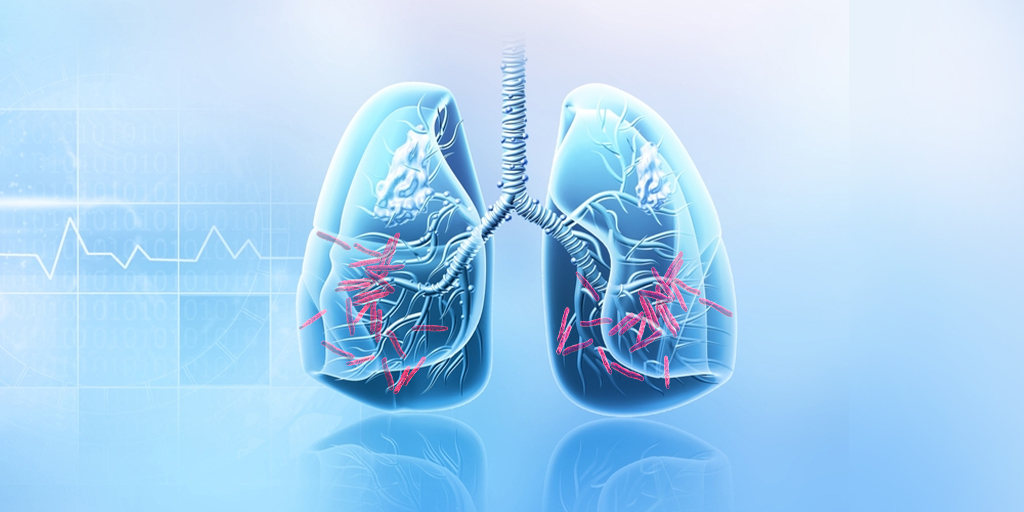
Tuberculosis - Globally, A Leading Cause of Death
Are You Aware? Healthcare settings are the breeding grounds for transmission of Mycobacterium tuberculosis (TB).
The prevalence of Healthcare-associated Mycobacterium tuberculosis (Mtb) infection is rising in low- and middle-income countries (LMICs), which account for 87% of all cases of TB disease worldwide. [1] India accounts for 28% of TB cases in the world, with a huge probability of nosocomial transmission (HAI). [2]
Hospitals and health care personnel attending to infectious TB patients are at a high risk of developing the infection themselves.
Poor hygiene, substandard sanitization products, immunodeficient individuals combined with the admittance of Mycobacterium tuberculosis (TB) infected person puts the non-TB patients and staff in peril.
The WHO has drafted and proposed practical and low-cost measures to reduce Healthcare Associated Infections (HAI's). [3][4]
Whilst implementing these measures will certainly help hospitals reduce the transmission and spread of tuberculosis, there are further measures that hospitals need to take to reduce the risk and improve patient outcomes.
Hospitals: A High-Risk Transmission Zone & breeding ground.
In 2021, 1.6 million individuals worldwide (including 187 000 persons living with HIV) passed away from TB. [5]After COVID-19, TB is the second most common infectious killer and the 13th top cause of death globally. In India, more than 40% carry the disease but only 10% are detected. [6]
The risk that Mycobacterium tuberculosis can be transmitted from patients with active tuberculosis (TB) to other patients and healthcare workers has been recognized for m)any years. Patients who have undiagnosed pulmonary or larynx-related TB, are not receiving appropriate anti-TB treatment, and have not been placed in TB isolation are most prone to transmit the disease.
Close contact with people who have infectious TB has been linked to the transmission of M. tuberculosis in medical settings, especially while bronchoscopy and sputum induction procedures are being performed. TB can disseminate and travel far through the air. It is more challenging to treat cases of extensively drug-resistant TB (XDR-TB), also known as multidrug-resistant TB (MDR-TB).
Second-rate inferior disinfectants are not effective in combatting TB
Mycobacterium tuberculosis can survive for long periods on surfaces and in the air. [7]
Many of the traditionally used disinfectants are ineffective and offer several challenges to users such as
- Ineffective and not potent enough to battle the bacteria.
- Their effectiveness can be impacted by the presence of organic material, such as blood or mucus typically encountered in healthcare settings which can inhibit the disinfectant's ability to reach the bacteria and kill it.
- Products contain harsh and harmful chemicals releasing VOC’s that can cause skin irritation and breathing issues to housekeeping people using the product reducing the likelihood of good hygiene practices.
- Damage of expensive medical equipment and surfaces meaning the whole environment cannot be effectively cleaned and disinfected.
- Not tested to the latest standards such as EN14348:2015 to ensure absolute efficacy
- Require long contact times to work.
- Do not clean and disinfect equipment and surfaces.
Hospitals and healthcare personnel must also ensure certain hygiene practices to curb the spread of Mycobacterium tuberculosis (TB).
- Holistic hygiene measures should be embraced and imparted by the healthcare people including respiratory hygiene and cough etiquettes.[8]
- Surfaces and equipment in patient rooms and treatment areas should be regularly disinfected with appropriate disinfectants.
- Healthcare workers should be educated on the signs and symptoms of TB, and patients should be screened for TB upon admission to the hospital to identify and isolate infected individuals.
By implementing standard hygiene measures, healthcare facilities can significantly reduce the risk of TB transmission and protect patients, healthcare workers, and visitors from infection.
Bioguard: Powered by Biochem, Tested to European Gold standards
Certified to latest European Gold standards, Bioguard is designed to battle against various pathogens and bacteria including spores, ESKAPE, MRSA and Mycobacterium Tuberculosis (TB).
Formulated to be effective in under 30 seconds, Bioguard has been tested in unhygienic conditions to reflect real life use. Bioguard’s disinfectants are formulated to battle all types of infections and bacteria breeding in the hospital settings. A trusted name amongst healthcare professionals, Bioguard is equipped to kill all infections.
Stay Bioguard Safe
- Trusted – Regularly used by healthcare professionals in over 25,000 sites across the UK, Europe and GCC in high-risk environments.
- Proven – Independently tested to the gold standard European Norms [EN], EN13624:2013, EN13727:2012, EN14476:2013, EN17216:2018 & EN13704:2018, EN14348:2005, EN16615:2015 and EN1500.
- Robust – Broad Spectrum Microbiological efficacy means our products are effective against a wide variety of organisms such as ESKAPE pathogens & Clostridium difficile (spores & bacteria), Hepatitis, Tuberculosis, Norovirus, HIV, MRSA, and Avian Flu.
- Effective & Reliable – Bioguard proves to be effective in high-soiling areas and eliminates the need for multiple products.
- Multi-Surface – Designed to be usable on all surfaces (including fabrics and furnishings), so can decontaminate whole environments without causing degradation to surfaces.
- Fast-Acting – It is effective in under 30 seconds*.
- Safe – Products are non-hazardous and non-toxic and have been MEA & VOC tested to ensure they are safe and do not cause skin rashes or harmful vapors to users, improving the likelihood of hygiene compliance and reducing the risk AMR.
- Alcohol-Free – A formulated combination of alcohol-free and non-toxic products, Bioguard disinfectants are potent enough to be used in hospitals, IVF clinics, pharmaceutical manufacturing plants, and testing labs.
Overall, TB outbreak can be controlled if proper precautionary measures are undertaken in the healthcare arena. Worldwide, TB infections are reportedly falling nearly 2% per year and between 2015 and 2020 the total reduction was about 11%. The percentage was over half way to the End TB Strategy milestone of 20%.
DO YOUR bit today to help support ‘the End TB Strategy’ by using the POWER OF BIOCHEM to combat TB in your healthcare facility
Bioguard the effective, safer and user-friendly way to combat TB!


